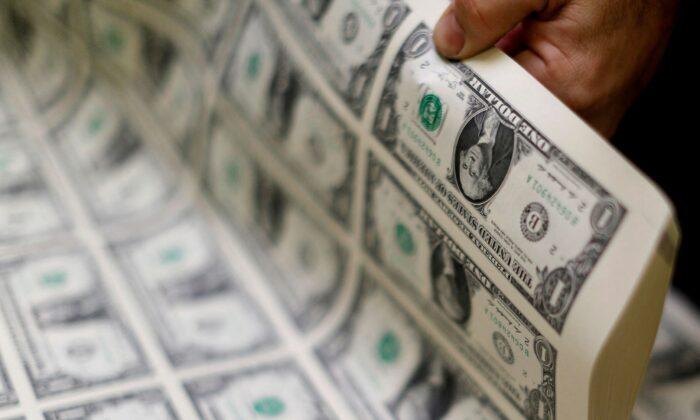LONDON/SINGAPORE—The dollar was on track for its biggest annual gain since 2015 on Friday, in the last trading day of a year dominated by Federal Reserve rate hikes and fears of a sharp slowdown in global growth.
European stock indexes were in the red in early trading on Friday. Asian equities had risen earlier in the session after market sentiment on Wall Street got a boost on Thursday from data showing rising U.S. jobless claims, which suggested the Fed’s interest rate hikes were lowering demand for labor.
Traders were also focused on the outlook for China. Optimism about the country’s reopening after three years of strict COVID-19 curbs has been tempered by surging infections which threaten more economic disruptions.
The United States, South Korea, India, Italy, Japan, and Taiwan have all imposed COVID-19 tests for travelers from China. The World Health Organization said it needs more information to assess the latest surge in infections.
In thin trading, the dollar index was down around 0.1 percent on the day at 103.900.
The U.S. Federal Reserve raised rates by a total of 425 basis points since March in an attempt to curb surging inflation.
Against a basket of currencies, the dollar has gained around 8.6 percent so far in 2022—its biggest annual jump in seven years—but it has pared some gains in recent weeks as investors expect the Fed’s rate-hiking cycle to end next year.
“I expect the king dollar to lose its crown and the dollar to make a more decisive turn by the middle of next year,” Bank of Singapore currency strategist Moh Siong Sim said.
The euro was flat on the day at $1.066, on track for a 6.2 percent annual loss versus the dollar, compared to last year’s 7 percent drop. A combination of weak eurozone growth, the war in Ukraine, and the Fed’s hawkishness has put the euro under pressure this year.
European Central Bank policymaker Isabel Schnabel said last week that the central bank must be prepared to raise interest rates further, including by more than the market expects, if that is needed to bring down inflation.
The U.S. dollar was down around 0.9 percent against the Japanese yen, at 131.805.
The Bank of Japan’s ultra-dovish stance has seen the dollar gain 14.5 percent versus the yen so far this year, in the yen’s worst performance since 2013. But the Bank of Japan’s surprise decision to tweak its bond yield control program saw the yen jump to a four-month high against the U.S. dollar earlier in December.
The dollar was down around 0.4 percent against China’s offshore yuan at 6.9438. The onshore yuan was set for its worst annual performance in 28 years, hurt by dollar strength and a domestic economic slowdown.
The Australian dollar, seen as a liquid proxy for risk appetite, was up 0.2 percent on the day at $0.6793, but on track for a 6.5 percent drop on the year overall.
The British pound was down 0.2 percent, set for a 11 percent annual drop.
The dollar was up around 0.1 percent against the Swiss franc, at 0.9233.
The Swiss National Bank increased the amount of the Swiss currency it sold in the third quarter of 2022, the central bank said on Friday, indicating that its focus has switched from stemming the franc’s strength to fighting inflation.





